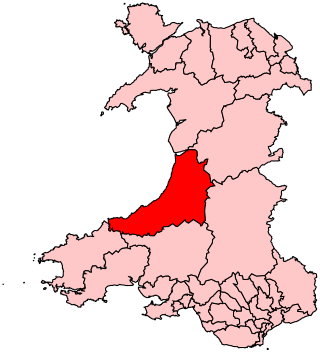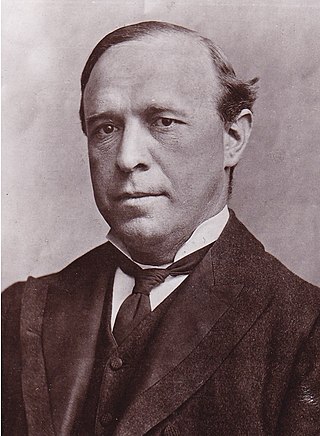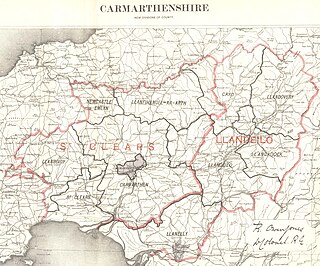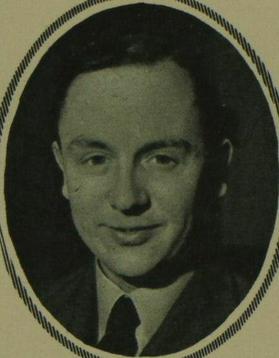| |||||||||||||||||||||||||||||
Constituency of Carmarthen | |||||||||||||||||||||||||||||
|---|---|---|---|---|---|---|---|---|---|---|---|---|---|---|---|---|---|---|---|---|---|---|---|---|---|---|---|---|---|
| Turnout | 87.40% | ||||||||||||||||||||||||||||
| |||||||||||||||||||||||||||||
| |||||||||||||||||||||||||||||
The Carmarthen by-election of 1957 in Carmarthenshire, Wales, was notable for resulting in the nadir of the British Liberal Party.
| |||||||||||||||||||||||||||||
Constituency of Carmarthen | |||||||||||||||||||||||||||||
|---|---|---|---|---|---|---|---|---|---|---|---|---|---|---|---|---|---|---|---|---|---|---|---|---|---|---|---|---|---|
| Turnout | 87.40% | ||||||||||||||||||||||||||||
| |||||||||||||||||||||||||||||
| |||||||||||||||||||||||||||||
The Carmarthen by-election of 1957 in Carmarthenshire, Wales, was notable for resulting in the nadir of the British Liberal Party.
The seat became vacant as a result of the death of Sir Rhys Hopkin Morris on 22 November 1956. The Liberal Party was in a period of decline and Hopkin Morris had been one of only six Liberal Members of Parliament. Hopkin Morris's majorities had been narrow and it was recognised that a significant number of voters had favoured him personally and might not transfer their allegiance to a new Liberal candidate.
Further distress for the Liberals was caused by the announcement that Lady Megan Lloyd George, a former Liberal MP with a national reputation, would be running as the Labour candidate. Previously selected prospective candidate for Labour, Brynley Thomas, stood down in her favour. The local Liberals created another dilemma by choosing John Morgan Davies as their candidate; the Liberals were seeking to challenge the ruling Conservatives over the ongoing Suez Crisis and Morgan Davies, like Hopkin Morris, had publicly taken a pro-government stand on the issue. Jo Grimond, who had assumed leadership of the Liberal Party only a few weeks before, had to choose whether to support or disown Morgan Davies. He chose to support him.
The other candidate who ran for the seat was Jennie Eirian Davies of Plaid Cymru.
The Conservatives did not run a candidate. They had not contested the seat since 1935, as one of several seats where the local Conservative and Liberal parties came to agreements where one party would not field a candidate, in order to avoid vote-splitting that could allow Labour to win. This was the second to last by-election in Great Britain, during the 20th century, in which they did not stand, the last being the unusual circumstances of the 1963 Bristol South East by-election.
The election was held on 28 February 1957. Lloyd George won the seat, swinging the constituency from Liberal to Labour and dropping the Liberal Party to their historic low of only five seats in Parliament.
| Party | Candidate | Votes | % | ±% | |
|---|---|---|---|---|---|
| Labour | Megan Lloyd George | 23,679 | 47.3 | +4.6 | |
| Liberal | John Morgan Davies | 20,610 | 41.2 | −8.3 | |
| Plaid Cymru | Jennie Eirian Davies | 5,741 | 11.5 | +3.7 | |
| Majority | 3,069 | 6.1 | N/A | ||
| Turnout | 50,030 | 87.5 | +2.4 | ||
| Registered electors | 57,183 | ||||
| Labour gain from Liberal | Swing | +6.5 | |||

Ceredigion was a parliamentary constituency represented in the House of Commons of the UK Parliament. Created in 1536, the franchise expanded in the late 19th century and on the enfranchisement of women. Its boundaries remained virtually unchanged until 1983. From 1536 until 1885 the area had two seats : a county constituency (Cardiganshire) comprising the rural areas, the other the borough constituency known as the Cardigan District of Boroughs comprising a few separate towns; in 1885 the latter was abolished, its towns and electors incorporated into the former, reduced to one MP. The towns which comprised the Boroughs varied slightly over this long period, but primarily consisted of Cardigan, Aberystwyth, Lampeter and Adpar, the latter now a suburb of Newcastle Emlyn across the Teifi, in Carmarthenshire.

Sir Rhys Hopkin Morris was a Welsh Liberal politician who was a Member of Parliament from 1923–1932 and from 1945–1956.

William Llewelyn Williams known as Llewelyn Williams, was a Welsh journalist, lawyer and radical Liberal Party politician.

East Carmarthenshire was a county constituency in Carmarthenshire, Wales. It returned one Member of Parliament (MP) to the House of Commons of the Parliament of the United Kingdom, elected by the first past the post voting system.

West Carmarthenshire was a parliamentary constituency in Wales which returned one Member of Parliament (MP) to the House of Commons of the Parliament of the United Kingdom.

Emrys Owen Roberts CBE was a Welsh Liberal politician and businessman.
Richard Thomas Evans was a British Liberal Party politician.
The 1943 University of Wales by-election was a parliamentary by-election held in the United Kingdom between 25 and 29 January 1943 for the House of Commons constituency of University of Wales.
William Nathaniel Jones, commonly known as W.N. Jones, was a Welsh Liberal politician, businessman and soldier.

Sir John Henry Morris-Jones was a Welsh doctor, soldier and Liberal, later Liberal National politician.
The Coalition Coupon was a letter sent to parliamentary candidates at the 1918 United Kingdom general election, endorsing them as official representatives of the Coalition Government. The 1918 election took place in the heady atmosphere of victory in the First World War and the desire for revenge on Germany and its allies. Receiving the coupon was interpreted by the electorate as a sign of patriotism that helped candidates gain election, while those who did not receive it had a more difficult time as they were sometimes seen as anti-war or pacifist. The letters were all dated 20 November 1918 and were signed by Prime Minister David Lloyd George for the Coalition Liberals and Bonar Law, the leader of the Conservative Party. As a result, the 1918 general election has become known as "the coupon election".
The Welsh Liberal Party was the section of the Liberal Party operating in Wales. From the 1860s until the First World War, a close relationship developed between particular issues relevant to Welsh politics and the Liberal Party. These included land reform, temperance, the expansion and reform of elementary education and, most prominently, the disestablishment of the Church of England in Wales. In the decade after 1886, there emerged another issue in the form of Home Rule as espoused by the Cymru Fydd movement but, for some within the Liberal Party in Wales this was a step too far and it came close to breaking the party.
The 1932 Cardiganshire by-election was a parliamentary by-election held on 22 September 1932 for the British House of Commons constituency of Cardiganshire.
The 1928 Carmarthen by-election was a parliamentary by-election held for the British House of Commons constituency of Carmarthen in West Wales on 28 June 1928.

Sir Courtenay Cecil Mansel, 13th Baronet was a Welsh landowner and farmer, barrister and Liberal Party politician who later joined the Conservatives.
The 1921 Cardiganshire by-election was a parliamentary by-election held for the British House of Commons constituency of Cardiganshire on 18 February 1921. The election was important for the bitterness of the contest between the Coalition and Independent factions within the Liberal Party and the deepening of this division within the party as a factor in the long-term decline of Liberalism in Wales.
The National Liberal Party, known until 1948 as the Liberal National Party, was a liberal political party in the United Kingdom from 1931 to 1968. It broke away from the Liberal Party on the issue of abandoning Free trade and supporting protectionism, and later co-operated and merged with the Conservative Party.
There was a parliamentary by-election for the House of Commons constituency of Leith, which took place on Wednesday, 23 March 1927.
The second election to the Glamorgan County Council was held on 8 March 1892. The 1889 election was the first contest and the next was the 1895 election. Glamorgan County Council had been established by the 1888 Local Government Act, and the first election held in January 1889. Glamorgan was by far the largest county in Wales in terms of population. The county of Glamorgan was at this time becoming heavily industrialised, although some areas such as the Vale of Glamorgan remained essentially rural. The rise of nonconformist liberalism, especially since the 1860s, throughout Wales, had challenged the prevailing influence of the landed gentry. However, even in 1889, the traditional forces remained influential and no working men were elected to the council. This changed in 1892 with the unopposed return of David Morgan in Aberdare and the success of Isaac Evans in Resolven.
Carmarthen Borough Council was a Welsh municipal body created by the 1835 Municipal Corporations Act which, at that time, replaced the ancient borough that had existed since medieval times. The Council consisted of 24 members, eighteen of whom were elected councillors and the remaining six were aldermen. Councillors were elected on a triennial cycle, with a third of councillors retiring each year. Aldermen were elected for a six-year term, normally from within the council membership although retiring aldermen were often re-elected without facing a contest.